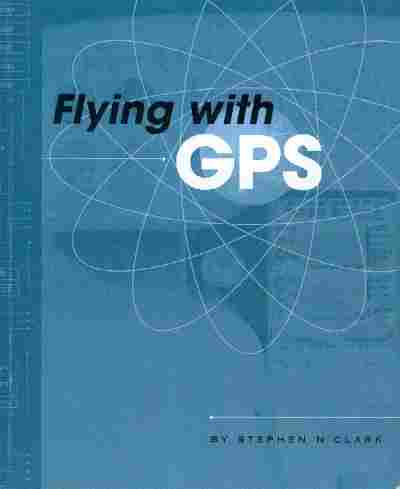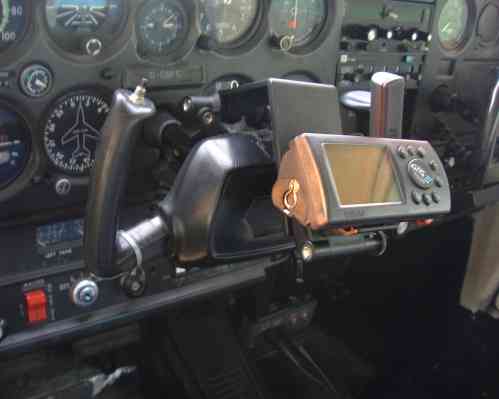GPS Tracking
My first GPS experience was the purchase of a Garmin GPS III
Pilot in 2001. I didn't use it as much as I would've liked, because I
tended to perform flights in the local area, which was very familiar to me. I
initially secured the GPS to the cockpit fairing (with lots of tape!) but this
proved to be too far away to be able to read the display effectively.
A yoke mount was purchased for some inflated sum, but it did
improve the useability of the GPS.
I used the GPS mainly as a track logger, for use after
the flight to plot the actual route on a package such as Microsoft Autoroute.
More recently I have used the GPS for real, on a route from Stapleford
to Duxford and return. I found the book Flying with GPS by
Stephen N Clark a really useful source of information for using the GPS in a
real world, flying environment. It goes beyond what the Garmin user manual
provides; it even takes a step backwards to remind you of the theory (such as
the 1 in 60 rule) so that you appreciate what the GPS will do for you, but also
realise the limitations. Another plus point for the book is the UK bias. So many
flying books, being written in the U.S., tend to have a U.S. bias for place
names and procedures. Flying with GPS has example flights for the
UK, such as
Compton to Kemble.
 |
The book is quite specific to the Garmin
range (GPS 92 / GPS III Pilot / GPSMAP 195 / GPSMAP 196 / GPSMAP 295.
There is a supplement for the panel mounted Garmin GNS 430
I can't comment on how useful it would be for non-Garmin users, as I
have no experience of other types. |
|
|
Setting up the GPS in a club aircraft
|
The photo on the
right shows the GPS attached to the yoke mount in a C152. There is some
debate on whether or not an external aerial is required for reliable GPS
use. Flying a club Cessna 152, I have
not found the need to use an external aerial when flying around southern
England, although I haven't got a huge amount of experience with it.
The yoke mount attaches quite quickly,
although care must be taken to ensure it is securely located. ALWAYS CARRY OUT
YOUR "CONTROLS - FULL AND FREE MOVEMENT" checks after fitting the GPS.
The mount is adjustable at several places; make sure it does not obstruct your
view of the aircraft instruments.
|
 |
I
switch on the GPS just before engine start. I consider this to be OK
given that the GPS operates from batteries. If it was powered directly
from the aircraft systems, it would be far more prudent to leave it
until after engine start to minimise risk of damage. Switching it
on before engine start allows enough time for the unit to initialise
position so that the activation of the route takes place just before
taxi.
At
the end of the flight, I switch off the GPS just before engine shutdown. |

